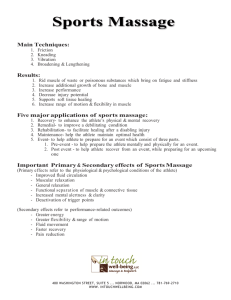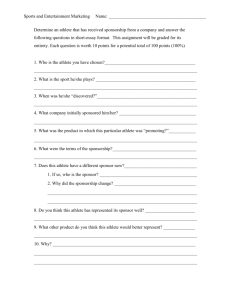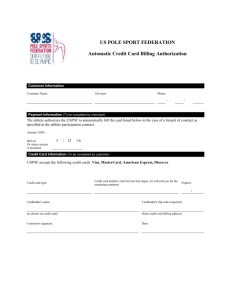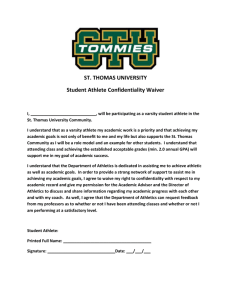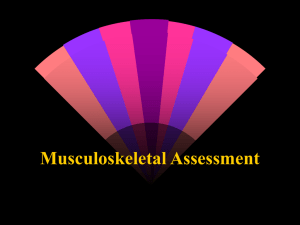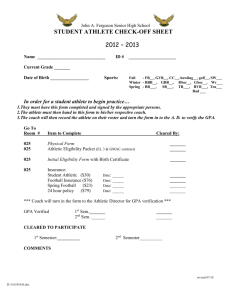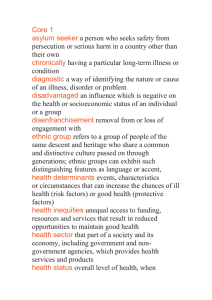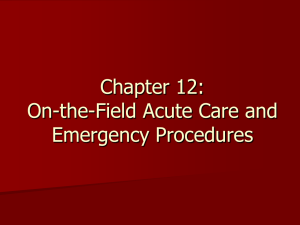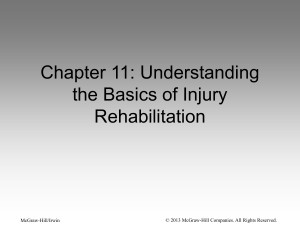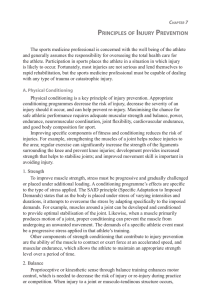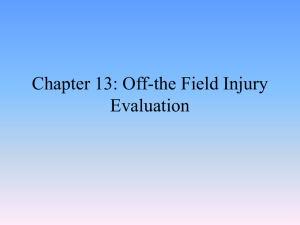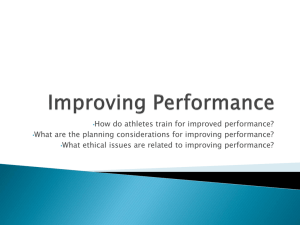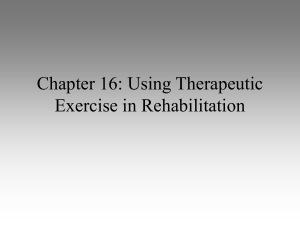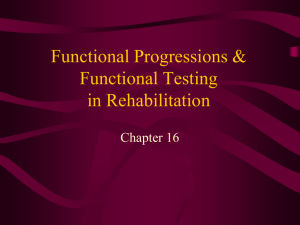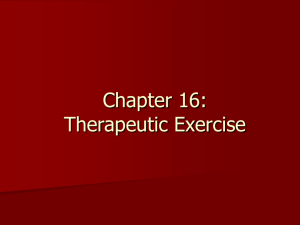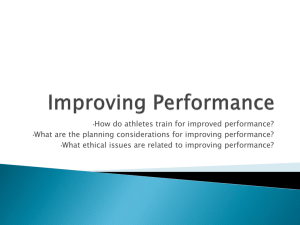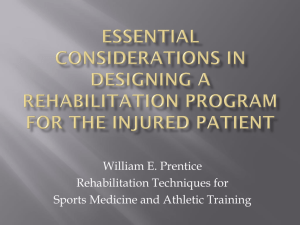Understanding the Basics of Injury Rehabilitation
advertisement
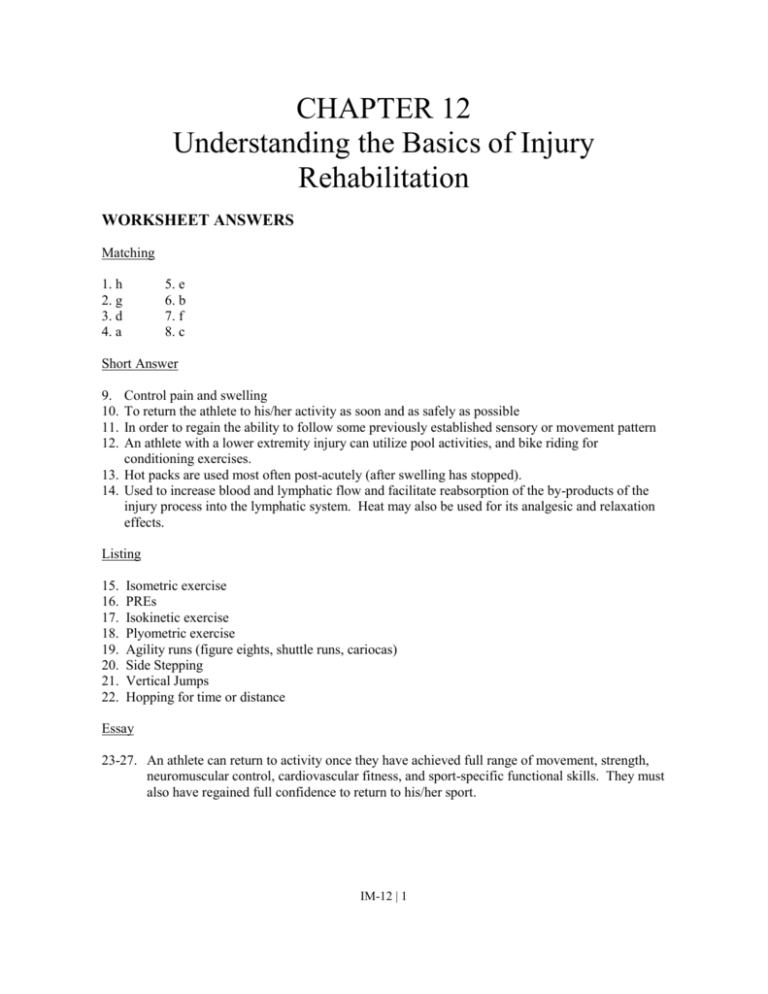
CHAPTER 12 Understanding the Basics of Injury Rehabilitation WORKSHEET ANSWERS Matching 1. h 2. g 3. d 4. a 5. e 6. b 7. f 8. c Short Answer 9. 10. 11. 12. Control pain and swelling To return the athlete to his/her activity as soon and as safely as possible In order to regain the ability to follow some previously established sensory or movement pattern An athlete with a lower extremity injury can utilize pool activities, and bike riding for conditioning exercises. 13. Hot packs are used most often post-acutely (after swelling has stopped). 14. Used to increase blood and lymphatic flow and facilitate reabsorption of the by-products of the injury process into the lymphatic system. Heat may also be used for its analgesic and relaxation effects. Listing 15. 16. 17. 18. 19. 20. 21. 22. Isometric exercise PREs Isokinetic exercise Plyometric exercise Agility runs (figure eights, shuttle runs, cariocas) Side Stepping Vertical Jumps Hopping for time or distance Essay 23-27. An athlete can return to activity once they have achieved full range of movement, strength, neuromuscular control, cardiovascular fitness, and sport-specific functional skills. They must also have regained full confidence to return to his/her sport. IM-12 | 1 NAME ______________________________ SECTION__________ CHAPTER 12 WORKSHEET Understanding the Basics of Injury Rehabilitation MATCHING: Match the following terms with the appropriate response. ______ 1.PREs ______ 2. Isometric Exercise ______ 3. Muscular strength ______ 4. Muscular endurance ______ 5. Isokinetic Exercise ______ 6. Massage ______ 7. Plyometric Exercise ______ 8. Neuromuscular Control a. b. c. d. e. f. g. h. The ability to sustain a muscle contraction over a period of time Systematic manipulation of the soft tissues of the body The mind’s attempt to teach the body conscious control of a specific movement The ability of a muscle to generate force Uses a fixed speed and a variable resistance to provide maximal resistance through a ROM Uses a quick stretch of a muscle to facilitate a contraction Uses a static contraction to increase strength without motion occurring at the joint Uses concentric and eccentric exercises in which there is a constant resistance against a muscle as it changes length SHORT ANSWER: Answer the following questions with a brief response. 9. What are the two things that can be done initially when an injury occurs? 10. What is the long term goal of any rehabilitation program? 11. Why is it important to restore neuromuscular function? 12. How can cardiovascular fitness be maintained in an athlete with a lower extremity injury? 13. When is a hot pack used? 14. Why are hot packs used in the rehabilitation process? IM-12 | 2 LISTING: List the ways in which muscular strength, endurance, and power can be restored. 15. 16. 17. 18. List four functional tests used to evaluate an athlete's ability to return to participation. 19. 20. 21. 22. ESSAY: 23-27. What are the criteria to return an athlete to activity? IM-12 | 3
